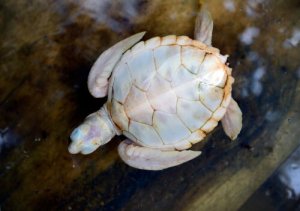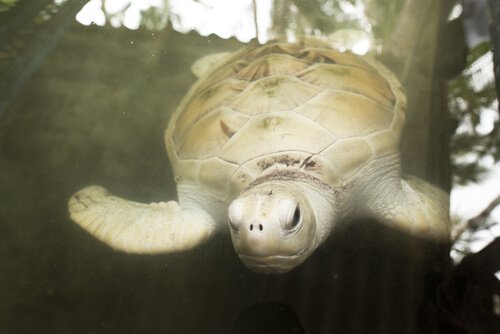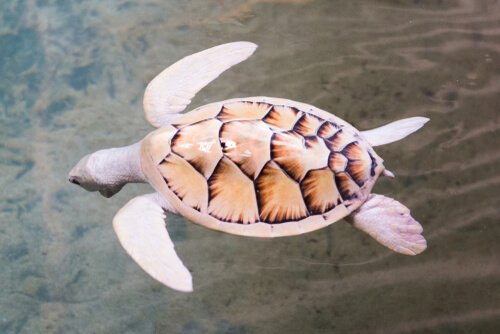White Turtles: Everything You Should Know About Them

Yes, white turtles do exist and some people have been lucky enough to see them on a beach or even in a river. This animal is one of the most incredible specimens in the world. They’re really very rare and the chances of seeing them are extremely low.
Usually, the only people who have the chance to see them are those dive regularly—those who venture to explore the wonderful secrets of the sea and its infinite treasures. The only chance most of us get to see them is thanks to the photographs that these people take.
Why are these turtles white?
White turtles are unique because of their white color, which gives them a beautiful and special look. We are more used to seeing other types of turtles that usually have different shades of green and brown.
White turtles can be divided into two groups in relation to their color. There are some who are white due to a lack of pigment in their cells. On the other hand, there’s another type that does have pigments in its cells, but it lacks an enzyme.
This prevents the normal colors of turtles from showing up, so the animal stays white. Not all white turtles are albino; this trait is believed to come from a hereditary recessive gene.
Where can we see white turtles?
There isn’t one specific place where you’ll be able to see these turtles. However, as we’ve said already, we do know that the main reason for their white coloring is the absence of pigments and enzymes. The truth is that this phenomenon can occur in any turtle around the world.

Having said that, there are certain places that keep examples of this species. This allows people from different countries of the world to enjoy seeing these rare and unique turtles. These places include an aquarium in Townsville (Australia) and in China.
There have also been sightings of this species in the Mediterranean, in Brazil and in Turkey. However, there isn’t enough information about the behavior of the white turtle due to the complexity of placing them in an outside controlled environment.
A mixture of colors
For turtles to be classified as white, they don’t necessarily have to be completely white. There are some turtles, classified within this group of reptiles, that have a white color accompanied by one or more other colors. Generally, these tonalities occur on the shell rather than on the skin.
Albinism in sea turtles has been reported in several places around the world. However, there is very little available data. Some studies have been conducted during the nesting season, but reports of live white turtles in juvenile or adult stages are very rare.
Whatever their color, turtles are charismatic animals that have been around for millions of years. They have a natural charm that appeals to adults and children alike.

Other important anomalies
According to experts, the morphology of white turtles’ offspring can determine the species’ survival rate. In general, larger baby turtles are usually faster swimmers and are more likely to escape from predators.
Therefore, large offspring are considered to have more advantages to overcome nature’s obstacles than their smaller counterparts. However, experts also believe that the largest offspring also have a greater susceptibility to solar radiation. This theory is still being investigated, though.
Additionally, the white turtle may also have malformations in its head and jaw.
Now turning to their shells…the symmetry of its shell is related to genetic stability and, therefore, has genetic implications. Experts say that this doesn’t favor survival since individuals with a deformation in their symmetry could give it to their offspring.
This is the case if turtles with this malformation reach the adult stage, but most of them die a few hours after birth. However, those that don’t have these external malformations can survive for some years.
All cited sources were thoroughly reviewed by our team to ensure their quality, reliability, currency, and validity. The bibliography of this article was considered reliable and of academic or scientific accuracy.
https://www.earthtouchnews.com/conservation/endangered/rare-albino-sea-turtle-hatchlings-discovered-off-mozambiques-coast/
http://www.seaturtle.org/mtn/archives/mtn131/mtn131p46.shtml
This text is provided for informational purposes only and does not replace consultation with a professional. If in doubt, consult your specialist.